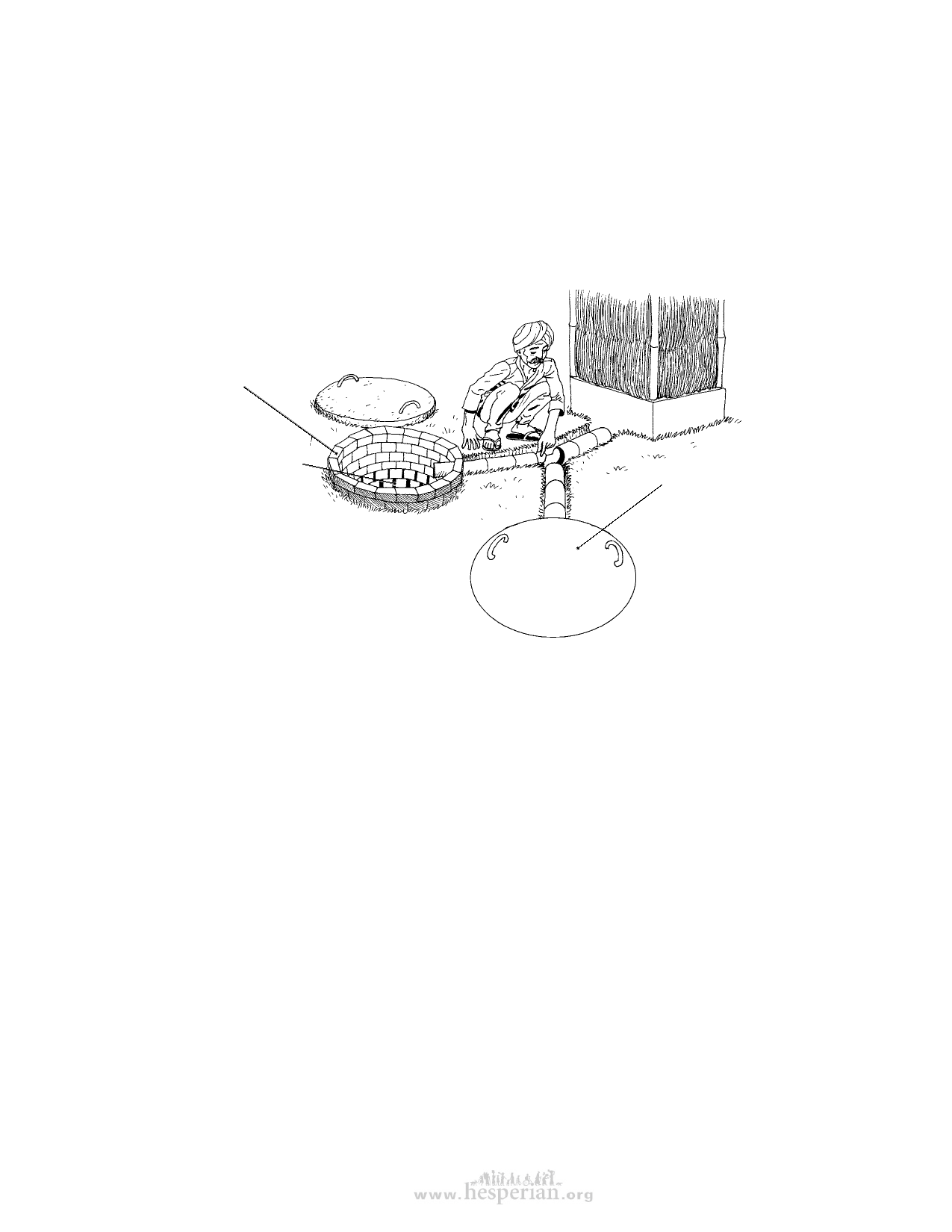
Sanitation and Cleanliness for a Healthy Environment 45
What to know when building a 2 pit pour-flush toilet
Except under very wet conditions or in places with high ground water, it is safe to
build pour-flush toilets within 3 meters of wells. In wet soil conditions the toilets
should be at least 20 meters from wells.
Pit size for a family of 5 should be 1 meter
deep and about 1 meter across. This will
allow the toilet to be used for about 3 years
before needing to be emptied.
Pit shape: The pits
can be any shape, but
round pits are the least
costly and most stable.
Pit lining should
be brick or stone,
in cement or
lime mortar, with
spaces left for
liquids to drain
out.
The distance between
pits should be at least
the same as the depth
of the pits. If the pits
are 1 meter deep, they
should be at least 1
meter apart.
Pits should be covered
with reinforced concrete
slabs, stone slabs,
or wooden planks.
The concrete platform
described on page 30,
without a hole in the
middle, could make a
good pit cover.
To use and maintain a pour-flush toilet
Water must be poured in after every use. Pouring a little water in before using will also
help keep the pan clean.
Clean the toilet daily. To clean the squatting pan, use detergent powder and a
long‑handled brush. The pits can overflow if:
• The water seal gets blocked, the toilet will not work.
• The groundwater is less than 3 meters deep, there is a risk of groundwater
contamination.
Emptying the pit
After about 3 years of use the first pit will be full. Divert the waste into the second pit,
while the first pit rests.
Remove the pit cover, add a layer of soil about 30 centimeters (2 hands-widths)
deep, and replace the cover. After 2 years, the contents can be removed with a shovel
and used as fertilizer.